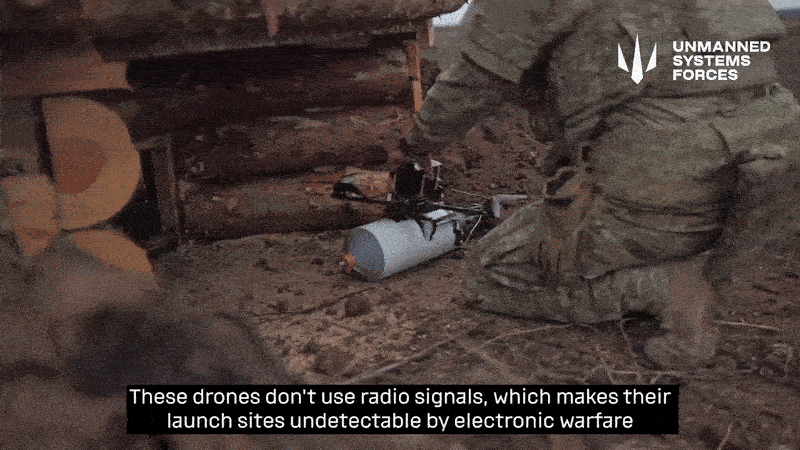A Ukrainian Drone Slipped into a Warehouse to Blow Up a Hidden Russian Tank
Fiber-optic controls allow very precise maneuvers
A video captured by a Russian drone crew and circulated online in early March surely chilled Ukrainian troops in war-torn eastern Ukraine. It depicted a warhead-laden quadcopter drone easing under a tarp and into a barn where a Ukrainian Bohdana wheeled howitzer was parked.
The drone slammed into the howitzer’s cab, likely badly damaging it.
Russian drone teams struck at least 154 Ukrainian vehicles in March, versus the 382 Russian vehicles that Ukrainian drone teams struck, so the Bohdana loss itself was painful … but wasn’t all that unusual. The circumstances, however, were rare—and a harbinger of a profound shift in drone tactics on both sides as Russia’s wider war on Ukraine grinds into its 38th month.
Most first-person-view attack drones, controlled via radio over a distance of five miles or so, aren’t capable of slipping past a tarp into a building. The lag in the control signal, and the signal’s degradation over distance and among structures, makes fine maneuvers difficult for even highly skilled operators. Especially when the drone is low among buildings.
But fiber-optic drones—controlled via miles-long spools of millimeters-thick optical fibers—don’t mind buildings as long as the buildings don’t snag their control fibers. A skilled fiber-optic FPV operator can gently maneuver their quadcopter past a tarp into a barn—or even through an open door, as one Ukrainian operator did when he ambushed Russian troops sleeping in a building near the front line late last month.
Fleeting Russian lead
The Russians took the lead with fiber-optic FPVs starting late last year, clearly as a response to highly effective Ukrainian radio-jamming that grounded many radio-controlled drones.
Fiber-optic drones are unjammable, as the Ukrainians learned the hard way in early January. A company of Ukrainian paratroopers attacked the village of Berdin in western Russia’s Kursk Oblast, presumably under the cover of the usual jamming.
But the Russian garrison in Berdin met the paratroops with a swarm of fiber-optic drones—and defeated the attack, sowing the snowy fields around Berdin with mangled bodies.
The Ukrainian Unmanned Systems Forces scrambled to catch up with Russian fiber-optic drones. “We’re now on the third generation of these products,” a USF official explained in an official video. That’s three generations of tech in just as few months—a very fast pace of development.
Now a Ukrainian fiber-optic drone has effectively duplicated the Russian drone-operator’s barn-snooping feat, perhaps signaling that the Ukrainians have finally caught up with what, at its most frightening, threatened to be an enduring Russian technological advantage.
On or just before Friday, a fiber-optic drone from the 53rd Mechanized Brigade’s Signum team—deployed west of Bilohorivka in eastern Ukraine—slipped into a warehouse to strike a parked Russian T-80 tank. A tank that, just a few months ago, would’ve been perfectly safe from Ukrainian drones.
Read more:
Russia's Scooter Troops Don't Live Long on the Battlefield
Yes, Russian troops really are riding into battle on electric scooters. Yes, it’s usually suicide for the unfortunate scooter troopers. No, that doesn’t mean Russia can’t gain ground in Ukraine.






